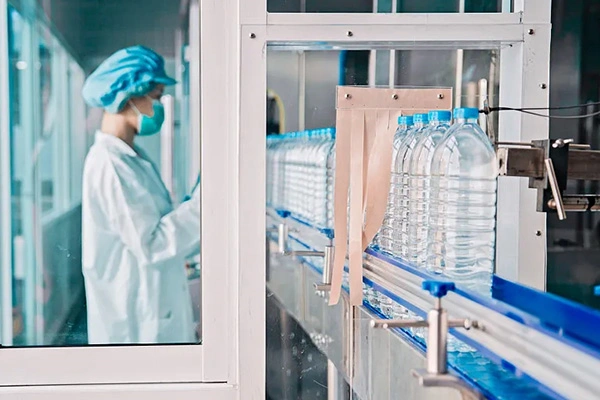In the world of industrial manufacturing, automatic liquid filling machine are the backbone of liquid packaging. The right machine can turn a messy, slow process into a streamlined operation—whether you’re bottling sparkling water, thick olive oil, or fresh-squeezed juice. But here’s the thing: not all liquids are the same, and neither are the machines that fill them. A soda needs a different setup than motor oil, for example.

Water Filling Machines: Simple, Fast, and All About Cleanliness
Walk down any grocery store aisle, and you’ll see shelves lined with bottled water—all thanks to water automatic liquid filling machine. These work on a straightforward idea: let gravity do the heavy lifting.
Don’t let their simplicity fool you, though. These machines are built with strict hygiene in mind. Parts are made of stainless steel, surfaces are smooth to avoid trapping dirt, and cleaning is a breeze. After all, no one wants contaminants in their drinking water. They’re also precise—whether you’re filling 500ml bottles or 5-gallon jugs, every container gets exactly the right amount.
Isobaric Filling Machines: Keeping the Fizz in Your Favorite Drinks
Ever wondered how soda stays bubbly from the factory to your fridge? That’s where isobaric automatic liquid filling machine come in. These are designed specifically for carbonated drinks—think soda, sparkling water, or seltzer—where keeping CO₂ locked in is everything.
Here’s the trick: before filling, the machine pumps a little CO₂ into the empty bottle, matching the pressure in the tank that holds the soda. This balance means when the liquid flows in, there’s no sudden fizz explosion. Once filled, the pressure is released slowly, so the bubbles stay put. No foam, no flat drinks—just that satisfying “pop” when you open the bottle.
Hot Juice Filling Machines: Fresh Taste, Longer Shelf Life
Juice lovers want that bright, just-squeezed flavor, but no one wants to toss a bottle after a week. Hot juice filling machines solve this with heat—killing bacteria without ruining the taste.
The process is clever: Juice is heated to around 85°C to sterilize it, then poured into heat-safe bottles (like sturdy PET or glass) while it’s still hot. The bottle is sealed right away, and the leftover heat sterilizes the cap and neck, too. After that, the bottles cool down in a special tunnel.
Beer Filling Machines: Protecting the Perfect Pint
Beer is finicky. It hates oxygen (which makes it taste stale) and needs just the right amount of bubbles. That’s why beer filling machines are like precision tools—they’re a step up from regular isobaric machines, with extra care to keep beer at its best.
The process is gentle: first, the bottle is either vacuumed out or flushed with CO₂ to get rid of oxygen. Then, the machine fills the bottle slowly, avoiding foam. Even the way pressure is released is controlled to keep bubbles intact. It’s all to make sure that first sip is as good as the brewer intended.
Oil Filling Machines: No Drips, No Mess, Just Exact Measures
Oils—whether cooking oil, motor oil, or essential oils—are thick, sticky, and easy to waste. Oil filling machines fix this with volumetric filling: they use pistons or gear pumps to measure out exactly the right amount, then push it into the bottle.
The real win? Anti-drip technology. A small vacuum valve at the nozzle sucks back any leftover oil, so you don’t get messy drips on bottles or conveyor belts. They’re also built tough—stainless steel parts that handle thick oils and wipe clean easily, so grease doesn’t gum up the works.
What All These Machines Have in Common
Even though they’re built for different jobs, these filling machines share some key strengths that make them essential in modern factories:
- Speed and automation: They can fill 50 to 1,000+ bottles per minute, cutting down on manual work and getting products out the door faster.
- Precision: No more overfilled or underfilled bottles.
- Cleanliness: Food-grade materials and built-in cleaning systems mean less risk of contamination—critical for anything people eat or drink.
- Flexibility: Swap out a few parts, and many machines can handle different bottle sizes or switch between similar products (like apple juice to orange juice).
- Smart integration: They work with other machines—like bottle washers, cappers, and labelers—to form a full, automated line.
Whether you’re bottling water, beer, or oil, the right filling machine makes all the difference. It’s not just about putting liquid in a bottle—it’s about doing it efficiently, safely, and in a way that keeps your product at its best.

